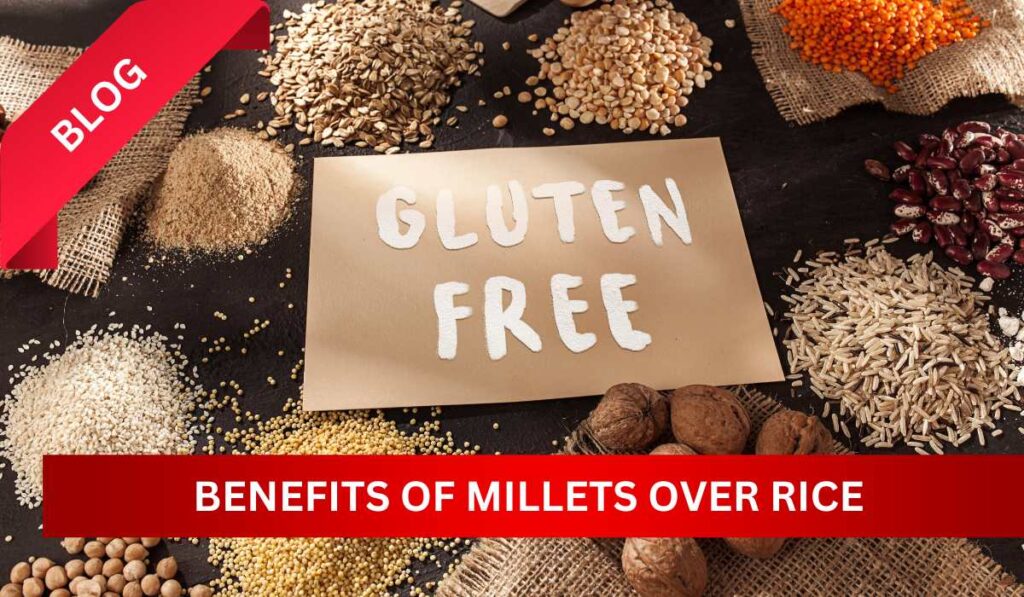Introduction: In recent years, there has been a growing interest in alternative grains and their impact on health and the environment. Millets, a group of small-seeded grasses, have gained significant attention due to their impressive nutritional profile and sustainable farming practices. In this blog post, we will delve into the numerous benefits of millets over rice, highlighting why these ancient grains are becoming popular choices for a healthier and more sustainable diet.
- Nutritional Superiority: Millets are packed with essential nutrients, making them a nutritional powerhouse compared to rice. They are rich in dietary fiber, vitamins (such as niacin, B-complex vitamins, and vitamin E), minerals (such as calcium, iron, and magnesium), and antioxidants. Millets also have a higher protein content compared to rice, making them an excellent choice for vegetarians and vegans.
- Gluten-Free and Digestive Health: For individuals with gluten intolerance or celiac disease, millets provide a fantastic alternative to rice. Millets are naturally gluten-free and do not contain the proteins found in wheat, barley, and rye that can cause digestive discomfort. Additionally, the high fiber content in millets promotes better digestion, regulates bowel movements, and helps prevent constipation.
- Blood Sugar Regulation: Millets have a low glycemic index compared to rice, meaning they are digested and absorbed more slowly, resulting in a gradual rise in blood sugar levels. This characteristic makes millets an ideal choice for individuals with diabetes or those seeking to manage their blood sugar levels. Including millets in your diet can help prevent blood sugar spikes and maintain a steady energy release throughout the day.
- Weight Management and Satiety: Due to their high fiber content, millets offer a greater feeling of satiety compared to rice. The increased satiety can help curb overeating and assist in weight management efforts. The fiber also aids in maintaining a healthy weight by regulating appetite, reducing the risk of obesity, and supporting a healthy metabolism.
- Heart Health: Millets have been associated with several heart-healthy benefits. Their high fiber content helps reduce cholesterol levels and improves heart function. Additionally, millets contain a significant amount of magnesium, a mineral known to lower blood pressure and reduce the risk of heart disease.
- Environmental Sustainability: Compared to rice cultivation, millets require considerably less water and are more resilient to drought conditions. They have a shorter growing period, which means less exposure to pests and diseases, reducing the need for chemical interventions. Choosing millets over rice supports sustainable agricultural practices and helps conserve water resources.
Conclusion: As awareness of the health and environmental benefits of millets continues to grow, they are becoming an increasingly popular alternative to rice. The nutritional superiority, gluten-free nature, digestive health benefits, blood sugar regulation, weight management support, heart-healthy properties, and environmental sustainability make millets a remarkable addition to any diet. Embracing millets not only nourishes our bodies but also contributes to a more sustainable future. So, why not give millets a try and unlock their amazing potential for your health and the planet?

